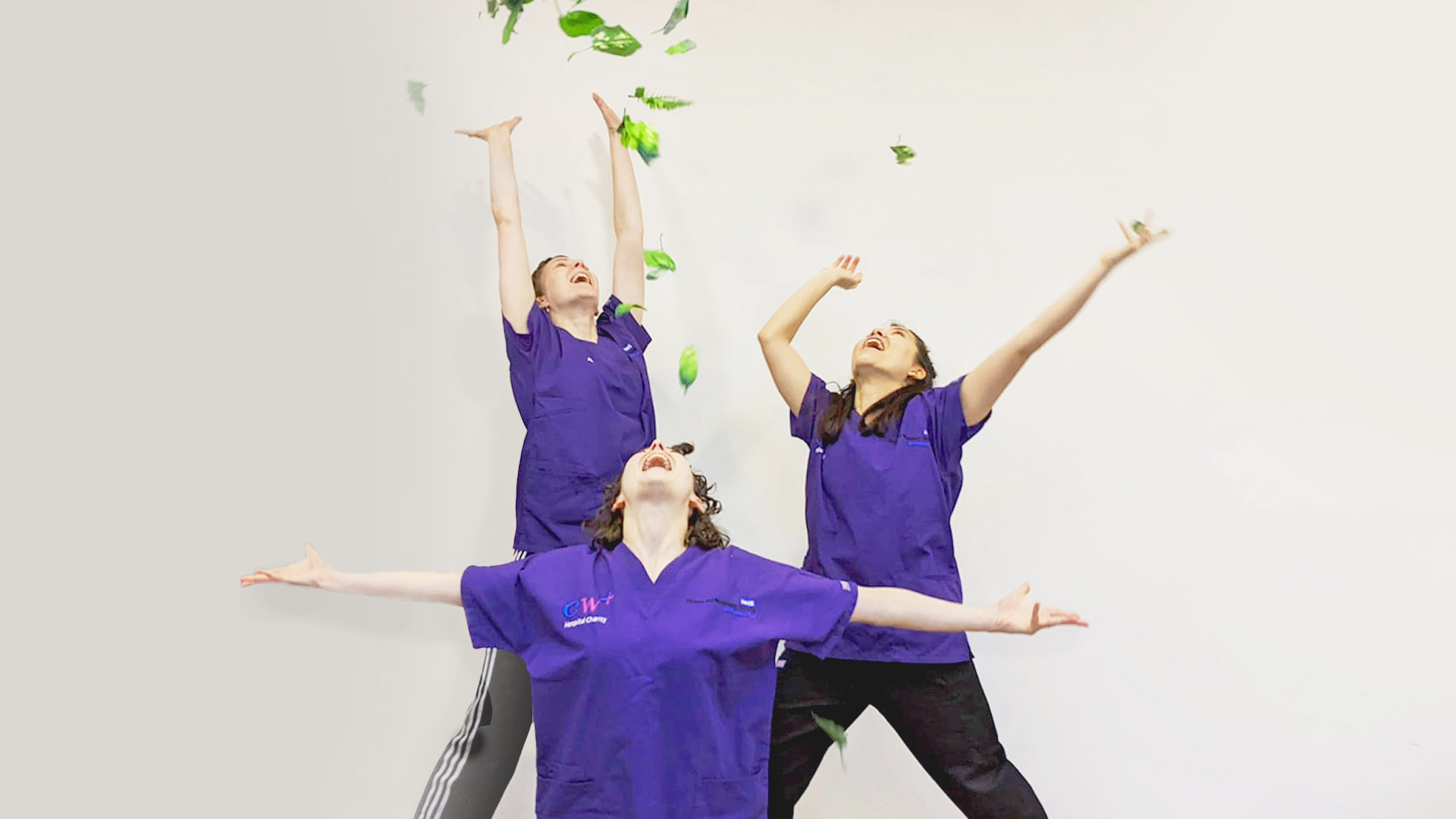
Thanks to our generous patrons, we’ve given a grant to Eek & Wild, a fresh, fun and joy-filled dance company. Emily, Ella and Katie began making work together in lockdown, and have since become Artists in Residence at Chelsea and Westminster Hospital, where they’ll be staging their new creative project, ‘Sculpt’. Our friend Sarah Rabone spoke to the trio about their process and journey so far.
We love to support projects like ‘Sculpt’, that are serving the community around them while also allowing for embodied, free creative expression. Join our Patrons scheme for as little as £5 / month – and we can keep supporting artists like Eek & Wild in their boundary-breaking explorations.
So who is Eek and Wild?
Katie Albon: Eek and Wild is the three of us – we are all independent dancers, all self-employed; we formed together as a company during lockdown because we all wanted something fun to do. We decided to make c couple of dance films together, and really loved working together. So we’ve just evolved into making work together more regularly.
Tell us a little more about the project that Sputnik is going to be funding, ‘Sculpt’.
Ella Fleetwood: We’ve been artists in residence at Chelsea and Westminster Hospital for nearly two years now. We’ve been working on the children’s ward, performing our pop-up dances, which are really short – can be performed by the bedside. But we wanted to make something really big, something where we can really move, and push ourselves physically and artistically.
The hospital had been looking at getting some work that happens in the atrium spaces, something really big and impactful. The hospital has a huge art collection, with amazing sculptures all over the hospital. We chose three of the sculptures, and started to chat with the children on the wards about them, and if they could imagine a dance about them.
Katie: So we took the children’s ideas and some of our own ideas and formed these three dances based on the sculptures. It’s been a long process; we’ve been able to use the hospital’s studio space. But more recently the Sputnik funding has enabled us to get some space of our own and refine what we’ve made, to rehearse it and spend a bit more time together.
Ella: There’s a real difference between having a sketch and having something ‘performance ready’. That’s what the funding has helped us to do.
What are the joys and maybe the difficult practicalities of working in a hospital context, at bedsides and around machines?
Emily Yong: One of the joys is that it’s a much more intimate performance. You’re making time and space for an individual child, and I think that makes them feel quite special. They get choice over what they see. And I think it also broadens the horizons and expectations of what dance is. When we say “would you like to see a dance today”, they think we’re going to take them into a different space; and we say “no we can do it right here by your bed” — they have no idea what they’re going to see.
Katie: It is tricky because you’re in a tiny room, there’s a bed, there’s machines, a sink behind you, a rail above you, and there’s three of us! But it causes us to have to think on our feet, and we all love improvisation, we all love to play. Because we’ve worked together a while, we can read each other well.
The other challenge is wearing a mask – our work is playful and fun, we use our faces a lot. Though you can do a lot with your eyes, in terms of connection.
You’ve talked about choice and interaction. I can imagine a child might want to move and collaborate with you in some way; in the future would you think about pushing that idea of collaboration, to moving with your audiences?
Ella: On the wards, at the end of our dance we have an open invite to interaction, which often leads to some sort of improvisation. So it can sometimes lead to movement with the children.
With this new show we have no idea what’s going to happen! I think we’re open and excited at the prospect that interaction could happen. There’s an invite there.
Katie: It also comes down to hospital precautions; it’s taken a lot for us to be allowed to perform in a public space. I’m hoping it can go there – if we’re told it’s safe enough.
Being dancers and Christians, how does that dynamic work for you?
Emily: We all work in different contexts, sometimes a faith-based one, sometimes outside that. I think we’re just the same person in each context. We’re not “more Christian” in one area.
There’s so many beautiful aspects of the Christian faith – love, peace, joy, kindness, patience; I hope those underpin the way I behave in any context, and in everyday life too. Maybe the separation of pockets of life isn’t that helpful a view. Our faith permeates into everything.
To follow Eek and Wild, follow them on Instagram, Twitter or see their website.
